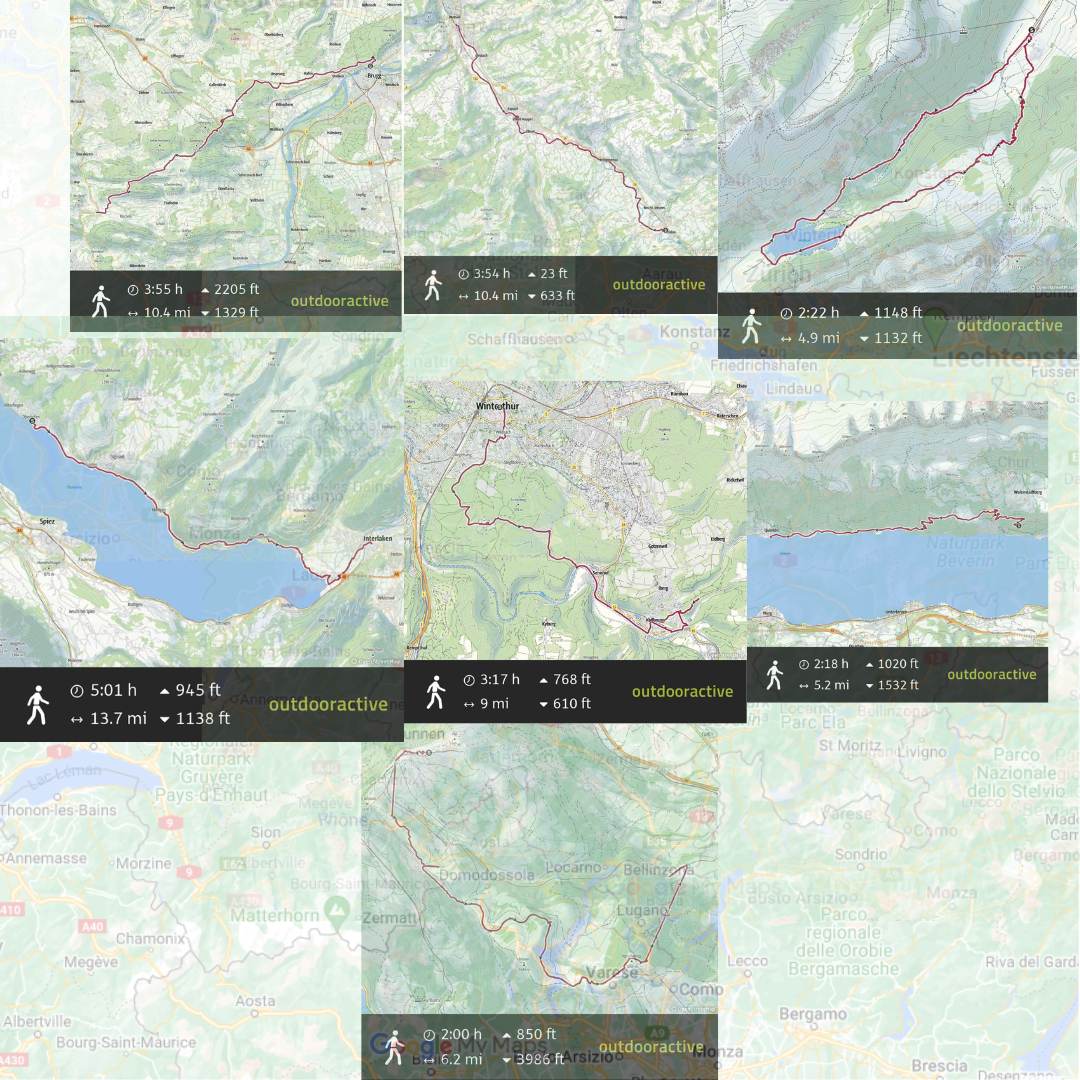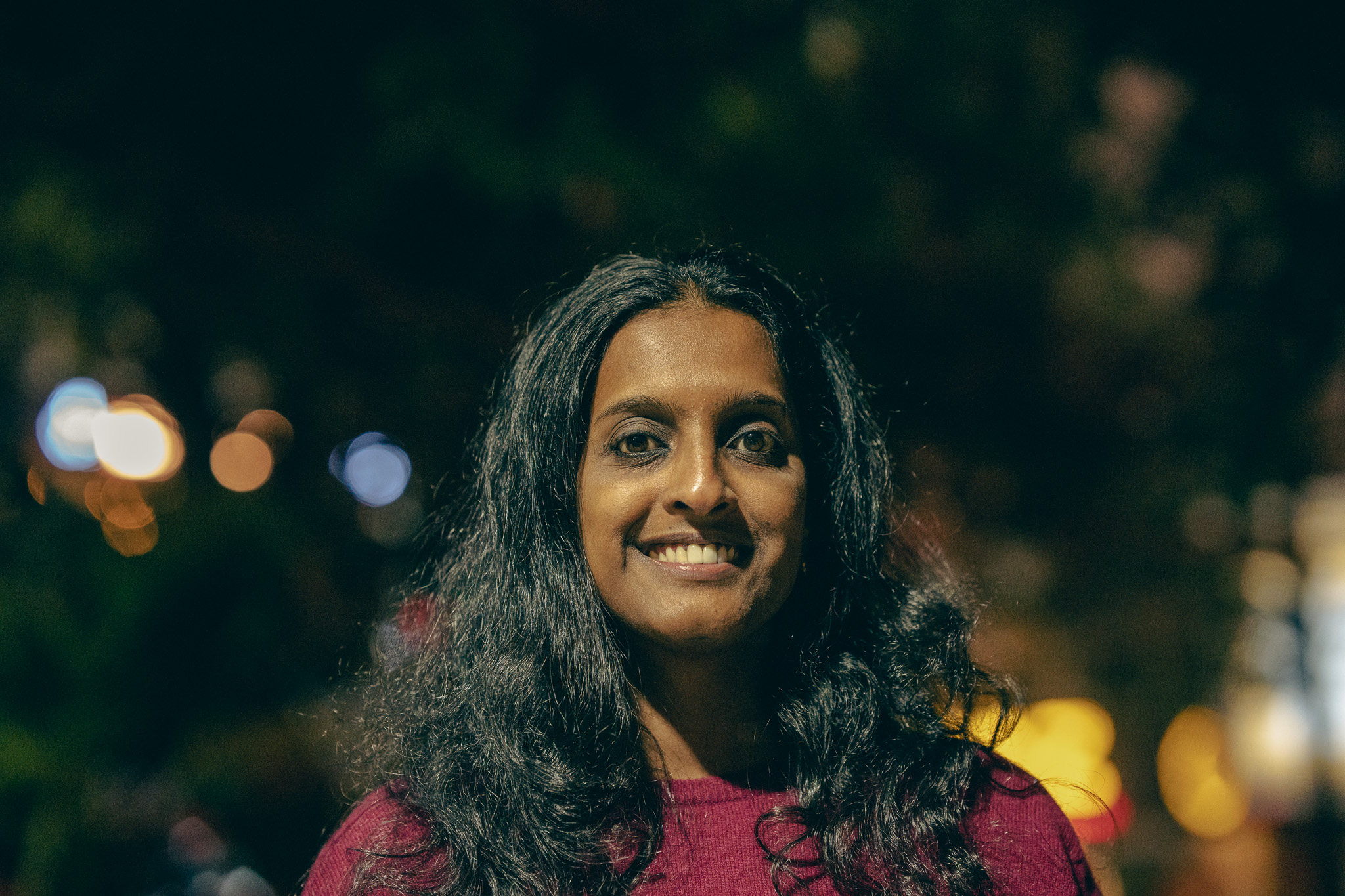I’ve hiked nearly every weekend, and sometimes during the week, through my residency. When I got to Winterthur in April 2023, hiking was not on my radar. It started as a fun way of getting out of the studio and going to places I’d never visited. And so I took myself off to Walensee in eastern Switzerland, mostly unprepared for what the hike would bring. It was a warm Saturday afternoon; the sun was already high when I was setting out, and I had no idea what the trail actually looked like. I nearly gave up at the very beginning because the path ran steeply uphill. I tried walking backwards to trick myself into believing I was going downhill and see if I’d engage different muscles. But there were others on the trail who looked very confused when I did that. At some point, I lost my balance trying to cross a precariously placed stream, and some passing hikers helped me back up on my feet. There are other ways to spend a Saturday afternoon.
But when I was done walking, it was wonderful to bask in the satisfaction of finishing the hike. I was hooked, and on Friday mornings, I’d find myself on the Switzerland Mobility website, trying to plan my next hike. The hike itself became a space to process the week. I like hikes that are long, on paths that aren’t too precarious and preferably in the vicinity of water bodies.
There is a rhythm to hiking. You put one foot after another for miles and hours. You look around you. When the trail gets treacherous, you walk with your eyes on the ground. When you pass people, you greet them. But mostly, you just walk, one foot after another, your boots and hiking sticks hitting the ground at regular intervals.

It’s comforting to find that consistency, but you also need to work to sustain it. To stay in a rhythm, you have to be alive to what is around you, and the ground beneath your feet. I’ve done lots of studio exercises which invite you to “feel” the ground beneath your feet, but hiking allowed me to come to this relationship with renewed sincerity. It’s also a question of safety – you have to trust that your feet will find the ground and hold ground. Over time, I trusted my feet and the ground more and more. I’d look ahead at a trail that felt like it needed extreme caution, and then find myself sauntering across it. It was nice to discover that this relationship changed.
My residency coincided with spring and the beginning of summer, and the tourist season. In cable cars and funicular railways, I would hear tourists talking about “covering” a place. “Did you go to Jungfraujoch?” “Yes, we covered that. It takes two days to cover the Alps.” What does it mean to “cover” a place, and does that eventually gesture to the possibility of “recovering” it? As I hiked, I thought a lot about being “in residence”. What does it mean to see or know a place? What does it mean to belong? How do you locate yourself in changing space and time? Are you “among”, “in front of” or “covering” new space and time? In new space and time, how are you shaped by the subjectivity of “home”, of where you are “originally” from? Does that determine whether you will “cover”, or if you can be “among”?
During a performance in a nature reserve in Lausanne, as I stared at a hollow tree branch, I heard the recorded voice in my ear saying, “We are all full of death.” Perhaps this is what it means to belong, to know that we all share the rhythm of a life cycle.
_________________
A list of the trails I hiked.
The 2nd stage of the Jura crest trail from Brugg to Staffelegg pass.
A meandering walk through the Parc du Jorat.
A stage of the Via Jacobi, historically a pilgrimage route, which I did in reverse, starting at Oberhofen castle and ending in Interlaken.
The 1st stage of the Zurich Oberland Crest Trail.
The 2nd stage of the Thurweg from Nesslau to Wattwil
Walendstadt to Quinten along the Walensee
The circumference of the Seealpsee in Appenzell.













